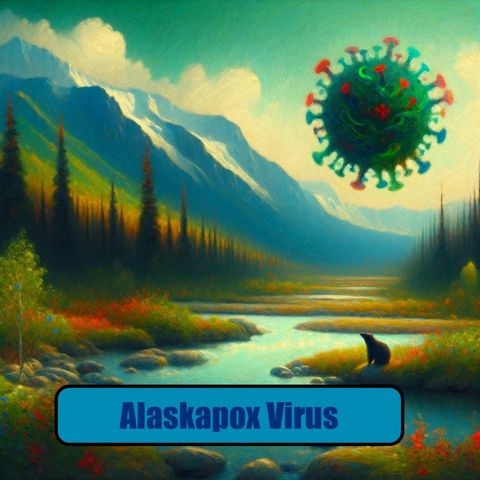Alaskapox Virus Explained

Download and listen anywhere
Download your favorite episodes and enjoy them, wherever you are! Sign up or log in now to access offline listening.
Alaskapox Virus Explained
This is an automatically generated transcript. Please note that complete accuracy is not guaranteed.
Description
Alaskapox Virus 101: An Overview The Alaskapox virus is a newly identified orthopoxvirus that emerged in Alaska, first detected in 2015. It's part of the Orthopoxvirus genus, which includes other...
show moreThe Alaskapox virus is a newly identified orthopoxvirus that emerged in Alaska, first detected in 2015. It's part of the Orthopoxvirus genus, which includes other more well-known viruses like smallpox and monkeypox. Here's everything you need to know about it, from its discovery and transmission to symptoms, treatment, and prevention strategies.
Alaskapox was first identified in a patient in Fairbanks, Alaska, in 2015. Since its discovery, there have been a few additional cases reported, all within Alaska. The cases have primarily been located in the Fairbanks North Star Borough and one in the Kenai Peninsula Borough. As of the latest information, no human-to-human transmission has been documented.
Research indicates that Alaskapox virus primarily occurs in small mammals, with red-backed voles and shrews being the most common carriers identified through small mammal sampling in the Fairbanks North Star Borough. However, the virus is likely more widespread among Alaska's small mammal populations. Domestic pets, like cats and dogs, may also play a role in spreading the virus to humans. There's currently no evidence to suggest that Alaskapox can be transmitted from person to person.
Infected individuals have presented with one or more skin lesions, resembling bumps or pustules, along with other symptoms such as swollen lymph nodes and joint or muscle pain. Immunocompromised individuals might be at increased risk for more severe illness. However, the overall symptoms have been relatively mild compared to other orthopoxviruses like smallpox and monkeypox.
Given the zoonotic nature of the virus, with transmission occurring from animals to humans, and the absence of human-to-human transmission, prevention strategies focus on reducing direct contact with small wild mammals and potentially infected domestic pets. People with skin lesions potentially caused by Alaskapox are advised to keep the affected area covered with a bandage to prevent direct contact. Healthcare providers who suspect an Alaskapox virus infection are encouraged to contact local health authorities for guidance and reporting.
Efforts to understand and monitor the Alaskapox virus include trapping and testing small mammals in affected areas. Researchers have set traps baited with oats and peanut butter for voles and squirrels to collect samples for analysis. These studies aim to better understand the virus's reservoirs, its prevalence among wildlife, and potential risk factors for human infection. The Alaskapox virus represents a unique branch on the poxvirus family tree, suggesting it's an ancient lineage, possibly existing in local mammals for a long time.
Alaskapox, while a concern due to its potential for causing illness in humans, does not appear to pose a significant public health threat at this time, especially given the lack of evidence for human-to-human transmission. Ongoing research and surveillance efforts are crucial for monitoring the virus's behavior and preventing potential outbreaks. Public health recommendations focus on awareness, particularly for those in areas with known cases and for individuals who may come into contact with small wild mammals or pets that could act as vectors for the virus.
Information
| Author | QP-2 |
| Organization | William Corbin |
| Website | - |
| Tags |
Copyright 2024 - Spreaker Inc. an iHeartMedia Company

Comments